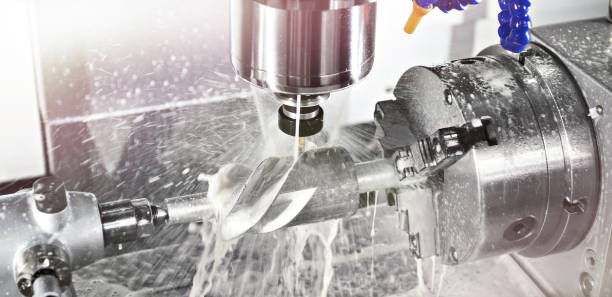CNC (Computer Numerical Control) cutting and design is a modern method used in industries like manufacturing, construction, and even art. It allows machines to cut and shape materials with great accuracy using computer programming.
This technology has replaced manual cutting methods, making work faster and more precise. Businesses and hobbyists alike use CNC machines to create detailed designs in wood, metal, plastic, and many other materials. In this article, we will explore the top five benefits of CNC cutting and design and why it is becoming so popular.
1. High Precision and Accuracy
One of the biggest advantages of CNC Cutting and Design is its high level of precision. Since the machine follows a computer program, it can cut with extreme accuracy, often within fractions of a millimeter. This is especially useful for industries that require detailed and exact cuts, such as the aerospace and automotive sectors.
Unlike manual cutting, which can have small errors due to human mistakes, CNC cutting ensures every piece is identical and perfectly shaped. This accuracy helps save time and material, reducing waste in production.
2. Increased Efficiency and Speed
CNC machines work much faster than human workers. They can run continuously for long hours without needing breaks, which speeds up production. Once a design is programmed into the machine, it can cut multiple pieces in a short time with the same accuracy.
This makes CNC cutting perfect for mass production, where large quantities of parts need to be made quickly. Even for small projects, the speed of CNC machines helps complete tasks in a fraction of the time it would take manually.
3. Cost-Effective Production
Even though CNC machines can be expensive to buy, they save a lot of money in the long run. Since they reduce material waste and work faster, businesses can produce more items in less time. This means lower labor costs because fewer workers are needed to operate the machines.
Additionally, CNC machines require minimal supervision, reducing the need for highly skilled labor. Over time, companies can save a lot on production costs, making CNC cutting a cost-effective solution.
4. Versatility and Flexibility
CNC machines can cut and shape almost any material, including wood, metal, plastic, foam, and even glass. This versatility makes them useful for different industries, from furniture making to medical equipment production.
The machines can also create complex and intricate designs that would be very difficult or impossible to make by hand. If a design needs to be changed, it can be done easily by updating the computer program, without requiring new tools or equipment.
5. Safe and Low Risk of Injury
Traditional cutting methods require workers to use sharp tools and heavy machinery, which increases the risk of accidents. CNC machines, on the other hand, are operated by computers, meaning workers do not have to be directly involved in the cutting process.
This reduces the chances of injuries, such as cuts or burns. Additionally, CNC machines have safety features that stop the machine if something goes wrong, making them much safer to use compared to manual methods.
Conclusion
CNC cutting and design offer many benefits, making them an essential part of modern industries. The high precision, speed, and cost-effectiveness help businesses save time and money. The ability to work with different materials and create detailed designs adds to the versatility of CNC machines. Most importantly, they provide a safer working environment, reducing the risk of injuries.

